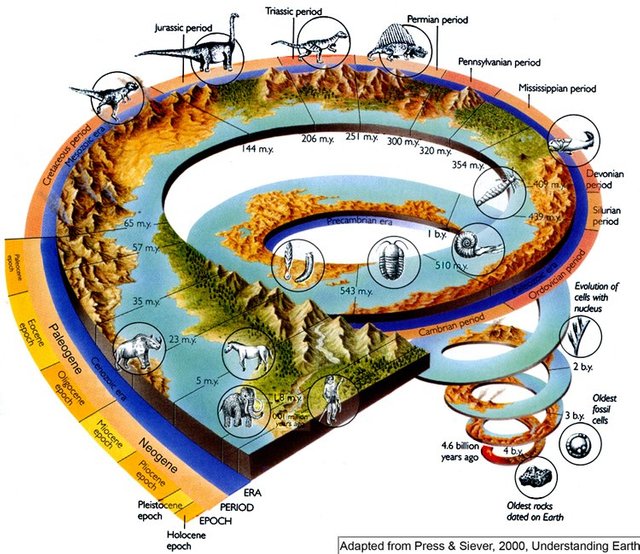The Origin of Natural Resources
Petroleum, natural gas, and coal come from weathering the remains of living things, so called fossil fuels. The process of formation takes a very long time so it includes natural resources that can not be renewed. Petroleum is often referred to as molten gold because of its very high value in modern civilization. Agriculture, industry, transportation, and communication systems are heavily dependent on this fuel, affecting all life activities of a nation. Oil and natural gas are the world's major sources of energy, reaching 65.5%, then coal 23.5 %, Hydro power 6%, as well as other energy sources such as geothermal, firewood, sunlight, and nuclear energy. The country that has a lot of crude oil reserves, occupies a profitable position, because it has a lot of energy supplies for industrial and transportation purposes, in addition to the importation of foreign exchange through oil exports. Petroleum is also called petroleum (Latin: petrus = rock, oleum = oil) is a slippery, flammable liquid and consists mostly of hydrocarbons. The hydrocarbon content in petroleum ranges from 50% to 98%. The rest consists of organic compounds containing oxygen, nitrogen, and sulfur.
There are three kinds of theories that explain the process of oil and gas formation, namely:
(1) Biogenetic Theory (Organic Theory)
According to Biogenitic Theory (Organic), it is mentioned that petroleum and natural gas are formed from a wide variety of animals and plants that are dead and buried under mud sludge. Mud sediment is then swept away by the river flow to the sea, finally settled on the ocean floor and covered Mud in the long term, thousands and even millions of years. Due to the influence of time, the high temperature, and the pressure of the rock layers above it, the dead animals and plants turn into spots and oil or gas bubbles.
(2) Inorganic Theory
According to Inorganic Theory, it is mentioned that petroleum and natural gas are formed by bacterial activity. Elements of oxygen, sulfur, and nitrogen from buried organic substances due to bacterial activity are transformed into an oil-like substance containing hydrocarbons.
(3) Duplex Theory
Duplex theory is a combination of Biogenetic Theory and Inorganic Theory. Duplex theory is widely accepted by the wider circle, explaining that oil and natural gas comes from various types of marine organisms both animal and vegetable. It is estimated that petroleum comes from animal matter and natural gas comes from vegetable matter.
Due to the influence of time, temperature, and pressure, the mud deposits become sedimentary rocks. Soft rocks derived from mud containing oil spots are known as rock rock (Source Rock). The oil and gas will then migrate to a lower pressure place and eventually accumulate in a certain place called a trap.
In a trap (Trap) may contain (1) oil, gas, and water, (2) oil and water, (3) gas and water. If the gas is present together with petroleum called the Associated Gas. Whereas if the gas itself exists in a trap called Non Associated Gas. Due to differences in specific gravity, the gas is always above, the oil in the middle, and the water at the bottom. Because the process of petroleum formation takes a long time, then petroleum is classified as an unrenewable natural resource.
Source: chem-is-try.org

Nice research
Only to the extent that I know, hahaha